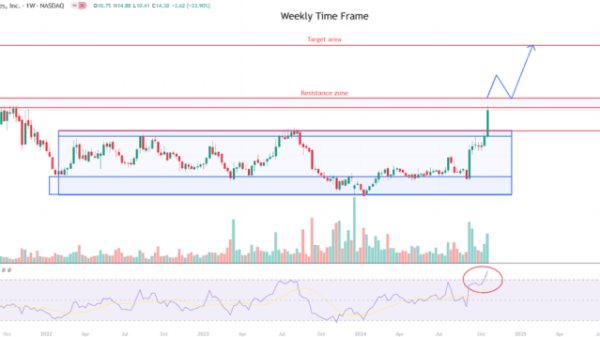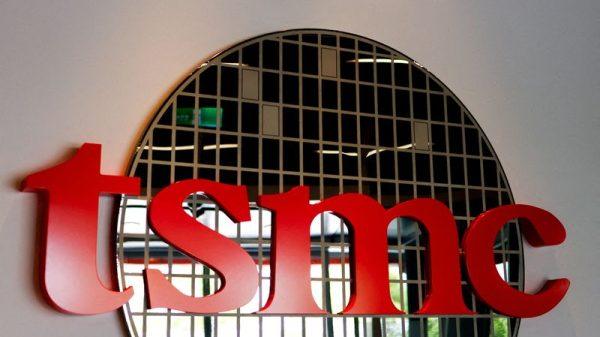Usana Health Sciences Inc. (NYSE: USNA) reported a challenging third quarter during their earnings call on October 24, 2024, with net sales falling below expectations. CEO Jim Brown cited a difficult operating environment, particularly in China, where net sales decreased by 4% despite a 7% rise in active customer counts. In response, Usana plans to ramp up promotional activities in the fourth quarter to regain momentum.
Key Takeaways
Usana Health Sciences Q3 net sales did not meet expectations, with a notable 4% decline in the Chinese market.
The company launched new products including Celavive Resurfacing Serum and Whey Protein Isolate in North America.
Usana is focusing on product innovation and rebuilding trust with sales associates.
Anticipated higher spend on incentives and promotional activities may affect Q4 margins.
Revised EPS guidance for Q4 reflects the increased spending.
The company remains committed to expanding its nutritional product line in 2025.
Capital allocation will prioritize organic growth, with share repurchases as a secondary option.
Management holds cautious optimism about the impact of Chinese government stimulus on consumer spending.
Company Outlook
Usana’s strategy includes increasing the frequency of new, high-quality product launches.
Focus for 2025 will be primarily on expanding the nutritionals category, with additional beauty and wellness products.
Bearish Highlights
The operating environment in key markets, especially China, has been challenging, impacting net sales negatively.
Higher spending on sales incentives and promotional activities is expected to pressure margins in the upcoming quarter.
Bullish Highlights
Despite the decrease in net sales, active customer counts increased by 7%.
Management is optimistic about the long-term potential of the Chinese market, encouraged by government stimulus measures.
Misses
Q3 net sales fell short of company expectations, particularly in the Chinese market.
Q&A Highlights
Brent Neidig is optimistic about economic development in China but notes that stimulus measures primarily target the stock market and local governments.
There is a positive trend in active customer count and customer acquisition in 2023, suggesting potential for increased consumer spending in the future.
As Usana Health Sciences navigates a tough economic landscape, the company is taking proactive steps to stimulate growth and maintain its commitment to innovation and quality. While the current situation presents challenges, particularly in the Chinese market, Usana’s leadership team is focused on long-term strategies and remains hopeful that government efforts will eventually translate into increased consumer confidence and spending.
InvestingPro Insights
Usana Health Sciences Inc. (NYSE: USNA) is facing headwinds, as reflected in its recent earnings report and market performance. According to InvestingPro data, the company’s revenue for the last twelve months as of Q2 2024 stood at $875.12 million, with a concerning revenue growth decline of 7.67% over the same period. This aligns with the challenging operating environment mentioned in the earnings call, particularly in China.
Despite these challenges, Usana maintains a strong financial position. An InvestingPro Tip highlights that the company holds more cash than debt on its balance sheet, which could provide flexibility as it navigates through this difficult period. This financial stability may support Usana’s plans to increase promotional activities and invest in product innovation, as outlined in their strategy.
Another InvestingPro Tip notes that Usana has impressive gross profit margins. Indeed, the data shows a gross profit margin of 80.77% for the last twelve months as of Q2 2024. This robust margin could help cushion the impact of increased spending on sales incentives and promotional activities that management anticipates for the upcoming quarter.
It’s worth noting that Usana’s stock price has fallen significantly over the last three months, with a total return of -20.41% according to InvestingPro data. This decline reflects the market’s reaction to the company’s recent performance and outlook. However, with a P/E ratio of 12.65, the stock is trading at a relatively low earnings multiple, which might interest value-oriented investors.
For those seeking a more comprehensive analysis, InvestingPro offers additional tips and insights. In fact, there are 11 more InvestingPro Tips available for Usana Health Sciences, providing a deeper understanding of the company’s financial health and market position.
Full transcript – USANA Health Sciences Inc (NYSE:USNA) Q3 2024:
Operator: Good day, and welcome to today’s Usana Health Sciences Third Quarter Earnings Conference Call. Throughout today’s recorded presentation, all participants will be in a listen-only mode. Later, we will conduct a question-and-answer session. [Operator Instructions] And now, I’d like to hand the call over to Andrew Masuda. Please go ahead, sir.
Andrew Masuda: Thank you, Sergei, and good morning, everyone. We appreciate you joining us to review our third quarter 2024 results. Today’s conference call is being broadcast live via webcast and can be accessed directly from our website at ir.usana.com. Shortly following the call, a replay will be available on our website. As a reminder, during the course of this conference call, management will make forward-looking statements regarding future events or the future financial performance of our company. Those statements involve risks and uncertainties that could cause actual results to differ, perhaps materially from the results projected in such forward-looking statements. Examples of these statements include those regarding our strategies and outlook for fiscal year 2024, as well as uncertainty related to the economic and operating environment around the world, our operations and financial results. We caution you that these statements should be considered in conjunction with disclosures, including specific risk factors and financial data contained in our most recent filings with the SEC. I’m joined by our President and CEO, Jim Brown; our Chief Financial Officer, Doug Hekking; our Chief Commercial Officer, Brent Neidig; as well as other executives. Yesterday, after the market closed, we announced our third quarter results posted our management commentary document on the company’s website. We’ll now hear brief remarks from Jim before opening the call for questions.
Jim Brown: Thank you, Andrew, and good morning, everyone. Third quarter net sales fell modestly short of our internal expectations as the operating environment in many of our key markets remained challenging. Notably, our China market experienced a more challenging environment in the third quarter than what we experienced during the first six months of the year. Although we increased active customer counts by 7% year-over-year in this important market, our net sales declined by 4% due to a decrease in average spend. We anticipate a continued challenging operating environment through the remainder of the year. We are planning to increase promotional activity in the fourth quarter to support and build momentum in our business. Our updated fiscal 2024 guidance incorporates these elements. We continue to focus and execute on the strategic initiatives previously communicated. Although these initiatives have not yet meaningfully manifested themselves in our operating results, we believe they are instrumental to laying the foundation for future growth and are confident that they will drive long-term customer and revenue growth. Let me share with you a few items. First, we continue to prioritize engaging with our associate sales leaders, who are vital to bringing in new customers to the Usana family. During the third quarter, we hosted a successful American-Europe Convention in Las Vegas, and this was one of the best conventions we’ve had in terms of feedback from our associate. Training, development and recognition were key focus areas at this event, with an emphasis on actionable initiatives to help our sales leaders grow their business. Feedback has been positive and leaders are actively adopting these new initiatives. Second, thanks to the collaborative efforts of our sales, marketing and research and development teams, we launched our first set of products under our new commercial team structure, Celavive Resurfacing Serum and a Whey Protein Isolate. Both products were launched in the US and Canada, and will be available in other markets over the next couple of quarters. These product launches are illustrative of the early stages of our product innovation strategy, which includes increasing the cadence of new and upgraded high quality, relevant and premium products. Additionally, I am encouraged by the increased agility that allowed us to bring these products to market. We have an exciting pipeline of additional products across our product categories currently in development with plans to be introduced throughout next year. I’ll close by saying that I am utmost confident in our team to execute our strategy to return Usana to longer term growth. With that, I’ll now ask the operator to please open the lines for questions.
Operator: [Operator Instructions] Our first question comes from Anthony Lebiedzinski from Fidelity Sidoti. Please go ahead.
Anthony Lebiedzinski: Good morning, and thank you for taking the questions. So I guess, first, you guys talked about the positive feedback coming out of the Las Vegas Convention. I think you touched on a couple of those. But maybe if you could just maybe share more details as to — and also as far as the feedback that you’re getting, I mean, how quickly can some of those inputs be put in and when you can start to see tangible benefits from that?
Brent Neidig: Thanks, Anthony. This is Brent. I’ll take that question. As you know, momentum in this business is very important. And the momentum derives from trust between the company and our sales leaders. And I think that’s one of the most important things that we did in this convention, and that an initiative we’ve tried to go forward with in 2024 is rebuilding that trust with our sales leaders. So the positive feedback that we received is that they feel the company is on the right direction. They feel that we have taken their feedback and input into account when we create new products. The tools and the systems that we presented at the convention were also in line with what it is that they were hoping for. So, through that feedback mechanism, we’ve heard that they are extremely excited for the future. And like I said, it takes time for momentum to grow and — but we expect this is the first part of that momentum phase. And over the course of Q4, excuse me, Q4 and into Q1 of next year, we expect that to continue to grow.
Anthony Lebiedzinski: Thank you for that, Brent. Okay. And then in terms of the faster new product development process that you guys talked about, I guess, what would be the main reason for that that you’ve been able to do this? And I mean, do you think you’ll need to hire perhaps more people to help ensure this continues?
Brent Neidig: I don’t think more people are needed. The thing that we primarily did internally is we restructured the way that that product development process works. We’ve created cross functional teams that sit together and that they’re able to solve problems more quickly than they used to. There’s a tighter collaboration now between our research and development team and the product team. So there’s increased communication that’s going on. We’re taking feedback more quickly from our markets. And we’re just able to implement that much more rapidly than we ever have before. So as Jim mentioned in his opening comments, we’ve got a very robust product pipeline prepared for 2025, and that’s really a result of all of this improvement that’s been made within this product development process.
Douglas Hekking: Yeah. And, Anthony, this is Doug. What Brent is saying is right on point. I think the other thing is both from Brent’s leadership and Jim’s leadership, if we see a need to go back and invest more in those areas, it’s something we’re committed to do. Right now, we think we’re resourced and looking to gain some efficiency from this new structure of the commercial team, but I think pretty optimistic, but definitely willing to invest for things that we think generate a return.
Anthony Lebiedzinski: Understood. And then as far as the — just a follow-up on the pipeline of new products. Can you share any more details as far as timing and whether is it more SKUs than what you typically have done in the past as far as those are concerned? And will those be in all markets? Or are you just looking to introduce those new products in only some of your markets? Maybe if you could just speak to that?
Brent Neidig: Sure. The way that we’re approaching new product development is we have to ensure that our existing product lineup is still very compelling and competitive in the marketplace. So that’s why we’re placing the majority of our effort initially is to ensure that the existing products are very compelling. So that would be the first part of the rollout for next year are some significant upgrades to our existing products. You’ll expect to see that very slowly in Q1 and start to pick up speed in Q2 and Q3 as the year goes by. In terms of a rollout process, it’s always easiest to launch a product in the United States first given the regulatory environment and our — just the process that it takes to bring a product to market. But our intention is that as the quarters go by, each of those products will begin to roll out throughout the globe. China has its own product development process that it goes through, so it may slightly differ from the rest of the markets. But for now, the intention is that we when necessary, we’ll start to roll those products out globally.
Jim Brown: And this is Jim. Just a little bit more. We will see the SKU count increase a little bit at the beginning. But with the product teams, they’re looking at the whole product lifecycle. So over time, we’ll be evaluating some of the SKUs that aren’t performing as well and probably discontinuing some. And I would say the engagement that Brent’s done with the field leaders and his team across the globe has more regional and local opportunities for different product offerings as well. And so that’s something that’s taken into consideration.
Anthony Lebiedzinski: That makes sense. Okay. And then I guess my last question before I pass it on to others. So I guess part of your lower SG&A was reduced advertising expenses. So first, I guess, do you think that perhaps reduced advertising had any sort of impact on your 3Q sales? And I guess secondly, how do you — how should we think about advertising for 4Q and beyond that?
Jim Brown: Yeah. I think the primary catalyst here is just moving away from certain activities that just weren’t demonstrating much of a return. I think we’re constantly looking to repurpose things to go back and stimulate whether that’s in the form of promotions, incentives, ad spend. Those things we’ll continue to look at. I think what you saw in particular, we’re just moving away from a few things that just have shown not to be that effective.
Anthony Lebiedzinski: That makes a lot of sense. All right. Well, thank you very much and best of luck.
Jim Brown: Thanks, Anthony.
Operator: [Operator Instructions] And our next question comes from Linda Bolton Weiser from Davidson. Please go ahead.
Linda Bolton Weiser: Yes, hi. So I was wondering, as you pick up the promotional activity, does that affect more the associate incentive expense line or does that affect the gross margin more or maybe both?
Jim Brown: Yeah. And Brett can chime in here too, but we run different types of promotions incentives. Some are designed specifically more towards short term value initiative to drive behavior, getting people exposed the products. Others are more towards rewarding people on sales to generate it by new customers they introduce. And so you see a little bit of both. I would say, I think in the short term we’ll probably have more of trying to go back and really continue to go back and follow-up on the engagement we have with the field and support new sales generated to new customers will be probably a heavier piece of that. And I think you’ll see some increase in payout, at least that’s what we’ve modeled.
Linda Bolton Weiser: Okay. And then the revised guidance for the year in terms of the EPS for the fourth quarter that’s implied, I mean, I had to reduce my estimate quite a bit, and more so it seemed like on the margins. So what would be the particular things impacting margins in the fourth quarter? Is that just that increased promotional spending or is there something else going on in the cost structure? Maybe you can explain that about the margin expectations for the fourth quarter?
Jim Brown: Yeah, I’ll give you a little bit of color. With our third quarter results, EPS was actually higher than what we anticipated. There are some things that we just didn’t get in motion during the third quarter and we would have expected a little bit lower margin profile in Q3 and EPS. But it’s what you said and kind of what we just talked about. I would expect a higher spend on the incentive line as we step into this and support the field and continue to work on really creating some high levels of engagement.
Linda Bolton Weiser: Okay. And then just on your new products, the whey protein, is that specifically designed for customers that are taking GLP-1 drugs? I’m just curious about that.
Brent Neidig: Hey, Linda, it’s Brent. That isn’t the main intention for that particular product. It could be used in that capacity just because many people that are on GLP-1 drugs don’t get a sufficient protein profile in their diet. But it’s in general just a very premium whey protein isolate. It’s very clean and it’s — there’s a large market for that out there, especially amongst our existing distributor base. So that’s primarily the reason why we brought that to market.
Linda Bolton Weiser: Okay. And then I’m curious, the other product is a beauty serum. I guess it’s a beauty product, right, a serum, is that correct? So I’m kind of curious like why not a new product in nutritional supplements, which is more traditionally your line — your area more of strength and scale. Why necessarily these two products that are in kind of a little bit different areas?
Brent Neidig: Well, one product that did actually come to market at our Americas and Europe Convention is called Rest Complete, and that is in the nutritionals category, and that’s specifically a sleep product. We didn’t call that out per se, but that is a product that did come to market. You’re exactly right. We’ve got three categories. Nutritionals is by far and away our largest and most popular category. When you look at 2025, the brunt of our product introductions and upgrades are going to be focused on the nutritionals category to ensure that we continue to maintain our premium position in that space. But we also have many new products in store for our Celavive line, which is our skin care line. This just happened to be one of the products that was ready at the time to bring to market.
Linda Bolton Weiser: Okay. And then, I’m curious about your capital allocation thoughts. I know you discuss it frequently with the Board, but your free cash flow has come down, but it’s still fairly strong. It’s at least $50 million a year. And so is your intent to just kind of let your cash balance build up? What’s the trigger? I guess, what do you need to see in order to maybe go back to share repurchase or something like that?
Douglas Hekking: Yeah. Linda, you alluded to. I mean, literally, the first half hour of the meeting — this Board meeting, we talked about this. This is an every quarter issue. And so the Board, along with Jim’s direction is reviewing the totality of different things that we have in the works doing this other stuff and trying to make sure that we’re not being too short-term thinking there. I’m looking down the road and figuring out what the best use of that cash is. The direction from the Board and Jim is we need to find a way to put that to work to generate a return. And so we all get that. I would still say fundamentally, our orders of priority are investing in the organic business. We’ve been very active in looking at different opportunities in the business development side. That would be the second one. And then when we don’t have things that we see as potential, there are some of this other stuff and we look at excess cash and redistributing that, what we’ve done is through share repurchase. So those remain our areas of focus and priority.
Linda Bolton Weiser: Okay. And then my last question just has to do with China. You said, I guess, in the press release or something that you didn’t think the stimulus activities there would really affect your business all that much. But I don’t know, I mean, the Chinese government is doing these things because they want to try to stimulate consumer activity and the economy. So I mean, are you just saying you feel like it’s hopeless? Or there’s such a secular issue in China, a structural issue. If government stimulus won’t help, then what will, I guess? And how are you planning for that in the future as it being your largest market like?
Brent Neidig: Yeah. This is Brent here. I think it’s extremely optimistic that we’re seeing the government take a stimulus approach or stimulus measures to incentivize economic development and growth within China. That’s something that we certainly want to see and that’s something that our distributors and customers in China want to see as well. I think what was mentioned in the opening remarks is that we believe the current stimulus that’s been done, it’s primarily been directed towards shoring up the stock market, shoring up provincial and local branches, banks and governments. So that particular stimulus that came out, we don’t see a direct impact to consumers’ willingness to spend in the short term. But in my comments to Anthony previously, when I talk about momentum, the anecdotes that we’ve been hearing from our customers and from our team over in China is that this is a positive sign and that it starts to change the psyche of the people over in China, knowing that the government is there that’s going to help shore up and support their economic efforts. So we’re optimistic that, that will continue. And as it does, we believe that, that will change the sentiment of our consumers in China, and we should see that average spend per customer continue to go up from where it’s currently at. Our customer acquisition throughout the year so far has been greater than in 2023. Our active customer count has increased as well. So those are all very positive indicators. We just now believe that as soon as that economic faith starts to pick up, then spend should match the customer count, and that will be a positive thing for us.
Jim Brown: Yeah. And I would say, Linda, the consumers respond a little. I mean, we talk — Brent talks with the group over there all the time. We hear feedback and them helping us to view it from their eyes and better understand. And I think the Chinese consumer is a little bit different than what you’d see here in the States, and they behave different. So I think what Brent said is spot on is that I think there is a positive response to the government starting to do things. None of those things right now are directly related to individual consumer spend, and they could go there. And I think the Chinese government’s at least with what we’ve communicated has some intent to go back and continue to support the economy and support the growth in China. So I think we’re optimistic there. But the initial measures, the response we got is that just that in and of itself doesn’t go back and trigger as a catalyst to the business.
Linda Bolton Weiser: Okay. Well, thanks for that and good luck with everything.
Jim Brown: Thanks, Linda.
Operator: [Operator Instructions] It appears there are currently no further questions at this time. With this, I’d like to hand the call back over to Andrew Masuda for any additional or closing remarks. Over to you, sir.
Andrew Masuda: Thank you for your questions and for your participation on today’s conference call. If you have any remaining questions, please feel free to contact Investor Relations at 801-954-7210.
Operator: Thank you. This concludes today’s conference call. Thank you for your participation. Ladies and gentlemen, you may now disconnect.
This article was generated with the support of AI and reviewed by an editor. For more information see our T&C.



































